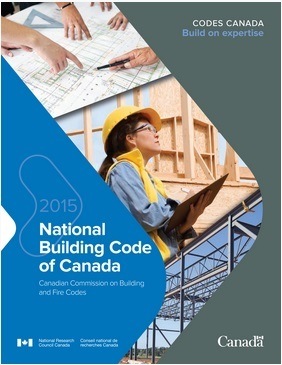People often ask me how to improve the soundproofing of an existing wall. Well, it depends on the assembly of the wall as is. In this article, I will provide numerous examples.
More...
Increasing sound resistance (sound transmission loss) of a wall
Lessons from Sound Resistance Tables.
Canadian National Building Code, 2015 release lists sound resistance (also called sound transmission loss) data for hundreds of common wall and floor/ceiling assemblies. The data was obtained through testing by the National Research Council acoustics lab. NRC is one of the most reputable labs in the world. Other sources of reference information for sound transmission loss data are listed on my other website Soundproofing Calculator.
I will discuss a few observations that I have deduced from the data. First, I will present a typical wall assembly's sound resistance value (STC) of a standard wall assembly. Then I will show increases in this value when assembly elements are added to the wall. Something a contractor may do to soundproof an existing wall. To help you interpret the subjective effect of changes in good resistance, refer to Table 1.
STC changes | Subjective perception |
|---|---|
0.5 | Slightly perceptible loudness change |
3 | Clearly noticeable loudness change |
10 | Halving of perceptible loudness |
20 | Quartering of perceptible loudness |
Table 1 - Subjective perception of changes in STC
Increasing sound resistance by adding an extra drywall.
Original wall: Wood 2 x 4-inch stud wall has one layer of 15.9 mm Type X drywall on each side, no insulation (wall number W1d). This assembly has STC 32. The wall number is a reference to the National Building Code.
Improved wall: If an extra layer of 15.9 mm Type X drywall is added to each side (wall number W2d) without adding insulation, sound resistance will increase from STC 32 to 36, that is, by 4 STC points. If insulation is added as well (wall number W2a), sound resistance will increase to STC 38, that is, by 6 STC points.
Original wall: Steel 2 x 2.5-inch stud wall 400 mm on the center has one layer of 15.9 mm Type X drywall on each side, no insulation (wall number S1c). This wall has STC 35.
Improved wall: If an extra layer of 15.9 mm Type X drywall is added to one side of this wall without adding insulation (wall number S2f), sound resistance will increase from STC 35 to 37, that is, by 2 STC points. If insulation is added as well (wall number S2b), sound resistance will increase to STC 44, that is, by 9 STC points.
If an extra layer of 15.9 mm Type X drywall is added to the other side of this wall as well, without adding insulation (wall number S3h), STC will increase from STC 35 to 42, that is, by 7 STC points. However, if insulation is added as well (wall number S3b), sound resistance will increase to STC 51, that is, by 16 STC points.
Increasing sound resistance by adding resilient channels.
Original wall: Wood 2 x 4-inch stud wall 400 mm on the centre has one layer of 15.9 mm Type X drywall on each side, with insulation (wall number W1a). This wall has STC 36.
Improved wall: If resilient channels are added to one side (wall number W3a), sound resistance will increase from STC 36 to 45 by 9 STC points. If an additional layer of 15.9 mm Type X drywall is added over the resilient channels (wall number W4a), sound resistance will increase to STC 51, that is, by 15 STC points.
Original wall: Wood 2 x 4-inch stud wall has two layers of 15.9 mm Type X drywall on each side, no insulation (wall number W2d). This wall has STC 36.
Improved wall: If resilient channels are added to one side, 600 mm on center (wall number W6l), sound resistance will increase from STC 36 to 47, that is, by 11 STC points. If insulation is added as well (wall number W6b), sound resistance will increase to STC 58 by 22 STC points.
Takeaway: increasing sound transmission loss of a wall
Adding elements to an existing wall can have only a slight benefit, or up to quartering the perceptible noise level, a significant noise reduction. This depends on the assembly of the existing wall and what changes are made to it. Remember that in many retrofit situations, only one side of the wall can be modified, resulting in fewer benefits. To find out how much soundproofing you need, check out this article.
Soundproofing depends on many factors, not all presented in this article. If you wish to contact the author of this article to obtain advice specific to your situation, click on the button below.
We always appreciate your feedback. If you have any comments about this article, please fill-in the form below.
